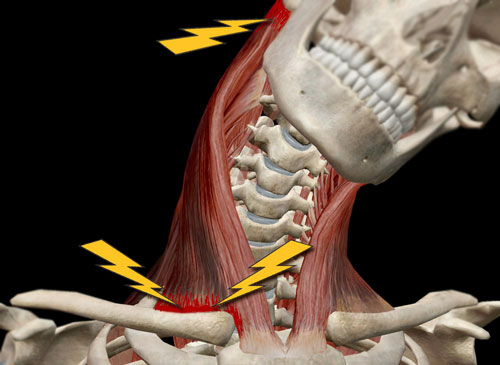
When the Funny Bone Ain’t Funny
Mobilizing the Ulnar Nerve The ulnar is the most exposed of all nerves and ranks second only to the median nerve (carpal tunnel syndrome) as

Mobilizing the Ulnar Nerve The ulnar is the most exposed of all nerves and ranks second only to the median nerve (carpal tunnel syndrome) as

Efficiency of movement, pain reduction, and improved function are the desired outcomes of most types of manual and exercise-based therapies, yet we’ve all seen how tension, trauma, and even overly aggressive bodywork can…

A Case Study Luke was referred by his personal trainer for neck mobility issues resulting from a direct blow to his left shoulder during football

Treating Kinetic Chain Kinks Recent manual and movement therapy blogs tout the importance of thoracic spine (t-spine) mobility as if it were a new discovery.

A “crick in the neck” is a common complaint among clients seeking manual therapy. This informal umbrella term can refer to symptoms that range from general cervical stiffness to complete immobility and unrelenting pain. When assessing cricks…

Both professional and recreational athletes depend on their hands, wrists and fingers for proper strength, grip and range of motion for optimal performance. Sprains commonly occur during active sports or household falls…

The term Arthro (joint) Kinetic (motion) Reflex was coined by University of Pittsburg researchers to describe how sensory input from joint movement reflexively activates or inhibits muscles – and no other place in the body is this concept more applicable than in the joints and connective tissues of the shoulder girdle.

In the early 20th century, sacroiliac joint syndrome (SIJ) was the most common medical diagnosis for low back pain, which resulted in that period being labeled the “Era of the SI Joint.” Any pain emanating from the low back, buttock or adjacent leg usually was branded and treated as SIJ.

The AC joint sits on the point of the shoulder lateral to the sternoclavicular (SC) and proximal to the glenohumeral (GH) joint. Regrettably, this oft-overlooked bony articulation receives little respect from most manual therapists. Both the AC and SC joints play vital roles in the biomechanics of throwing and other upper-limb activities.

The three scalene groups derive their name from the Greek word skalenos meaning “uneven.” Although anatomists depict the scalenes as individual muscles, most touch therapists are aware of how they work together as a functional unit during neck sidebending and rotation
Free subscription to the Technique Tuesday newsletter. Sign up to receive an in-depth article and technique video in your inbox every Tuesday.

© 2021 Freedom From Pain Institute